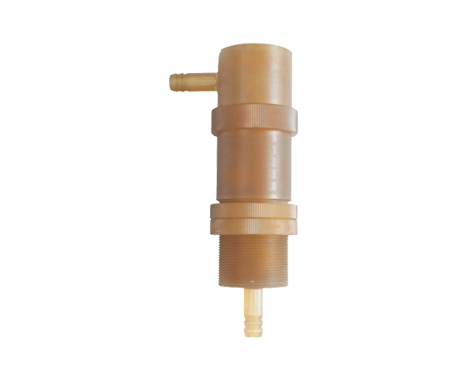Introduction
principle
The acid-base concentration meter is mainly used to monitor the concentration of the regeneration liquid of the ion exchanger in the process of producing high-purity water by the ion exchange method, or to prepare the pickling liquid for boilers and pipelines, and to continuously monitor the concentration of hydrochloric acid in the solution.
The AE30 type concentration meter adopts the electrode principle and is suitable for the AE30B polysulfone platinum electrode sensor, which can measure the concentration of various media such as HC, NaOH, H2SO4NaCl, HNONa2CO3, etc.
The concentration of the solution is indirectly calculated by measuring the conductivity of the solution. It is known that at a constant temperature, the conductivity of the low-concentration electrolyte corresponds to the concentration of the solution. When the concentration remains unchanged but the solution temperature changes, Conductivity also changes, ie the concentration of the solution is a function of conductivity and temperature. If the temperature of the solution can be measured and corrected to the conductivity at the standard temperature according to the aforementioned corresponding relationship, it can be directly converted into the concentration of the solution. It should be emphasized that the concentration of the solution is the sum of the conductivity of all conductive ions in the water. If there are two or more conductive components in the water, the above concentration-temperature-conductivity data can be measured, and the instrument can also be used. Measurement. If the ratio of the conductive composition in the water is uncertain, the meter cannot be used to measure.
In order to avoid electrode polarization, the instrument generates a square wave signal with high stability and applies it to the conductivity cell. The current flowing through the conductivity cell is proportional to the concentration of the measured solution. After the secondary meter converts the current from a high impedance operational amplifier to a voltage, After the program-controlled signal is amplified, detected and filtered, the potential signal reflecting the concentration is obtained. The microprocessor samples the temperature signal and the conductivity signal alternately, and after calculation and temperature compensation, the concentration value at a constant temperature is obtained.
application
Chemical, sewage, water supply, power generation, metallurgy, biology, pharmaceutical, paper and other industrial processes
Features
● Automatic temperature compensation, more precise measurement data
● Phase-sensitive detection: eliminate the influence of the wire on the concentration measurement
● Automatic conversion of measurement frequency: avoid electrode polarization and improve measurement accuracy
● Display concentration, output current, temperature, time and status on the same screen
● Adjustable uniform background light, can clearly observe the operation in the dark outdoor conditions
● Quick response, stable work and high precision
● Photoelectric coupling isolation output, good electromagnetic compatibility, high reliability, strong anti-interference ability
● Manual current source function: the output current value can be checked and arbitrarily set to facilitate the detection of the recorder and the lower computer
● Chinese display, Chinese menu





